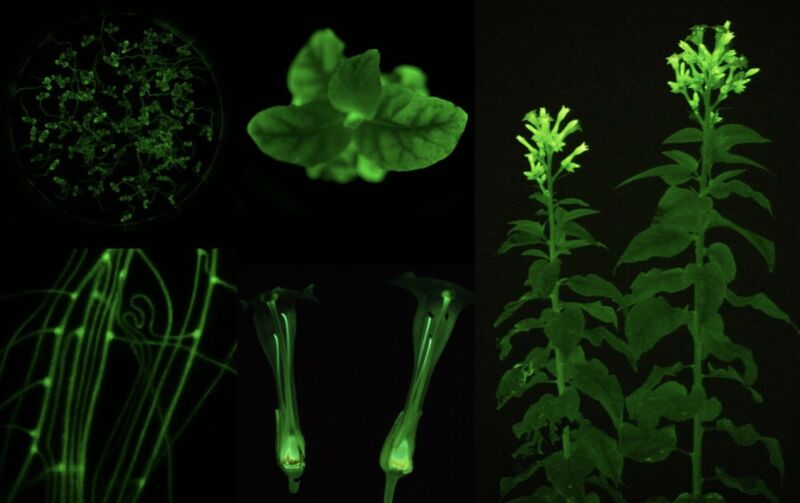
Enlarge / An image of some of the plant parts imaged under their own glow. (credit: Mitiouchkina et al.)
Wander into the wrong section of a home improvement store, and you'll discover entire aisles dedicated to a product category called "landscape lighting." Apparently, many people find it aesthetically pleasing to have systems to illuminate trees and flowers after the Sun goes down. If a group of Russian scientists has its way, however, the trees may ultimately be able to illuminate themselves.
A not-necessarily healthy glow
Plenty of living things glow in the dark. Some of these, like jellyfish and corals, rely on fluorescent proteins, which absorb energy at one wavelength and then re-emit it later at a visible one. Others, like fireflies, have enzymes that convert chemical energy to photons and so aren't limited by the need for a source of photons to power their glow. Typically, these latter organisms have a specific chemical—generically called a "luciferin"—that provides the energy. An enzyme called a "luciferase" (again, a generic term) cleaves a chemical bond in the luciferin and releases its energy as a photon.
(The use of these generic terms can be confusing, as the terms are interchangeable but the molecules are not. So, if you try to feed the luciferin from bacteria to the firefly luciferase, nothing will happen. It also means that the list of molecules in the "luciferin" category is regularly expanding as biologist categorize more systems.)
No comments:
Post a Comment